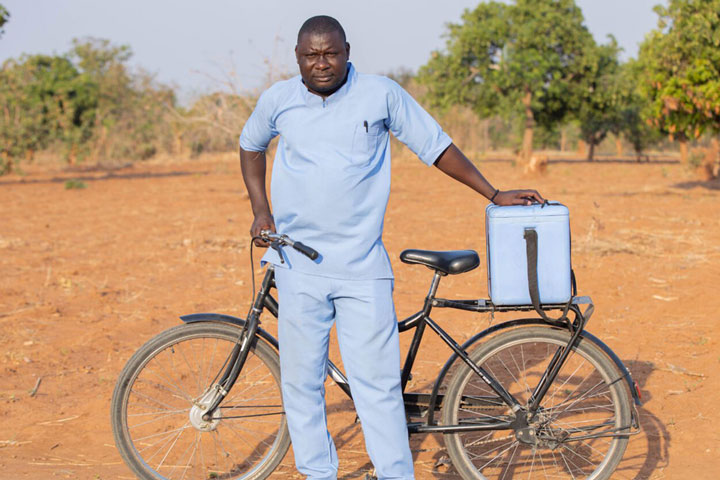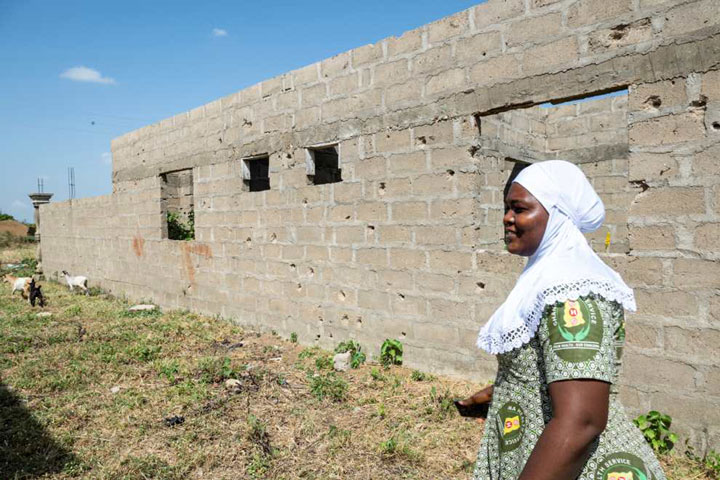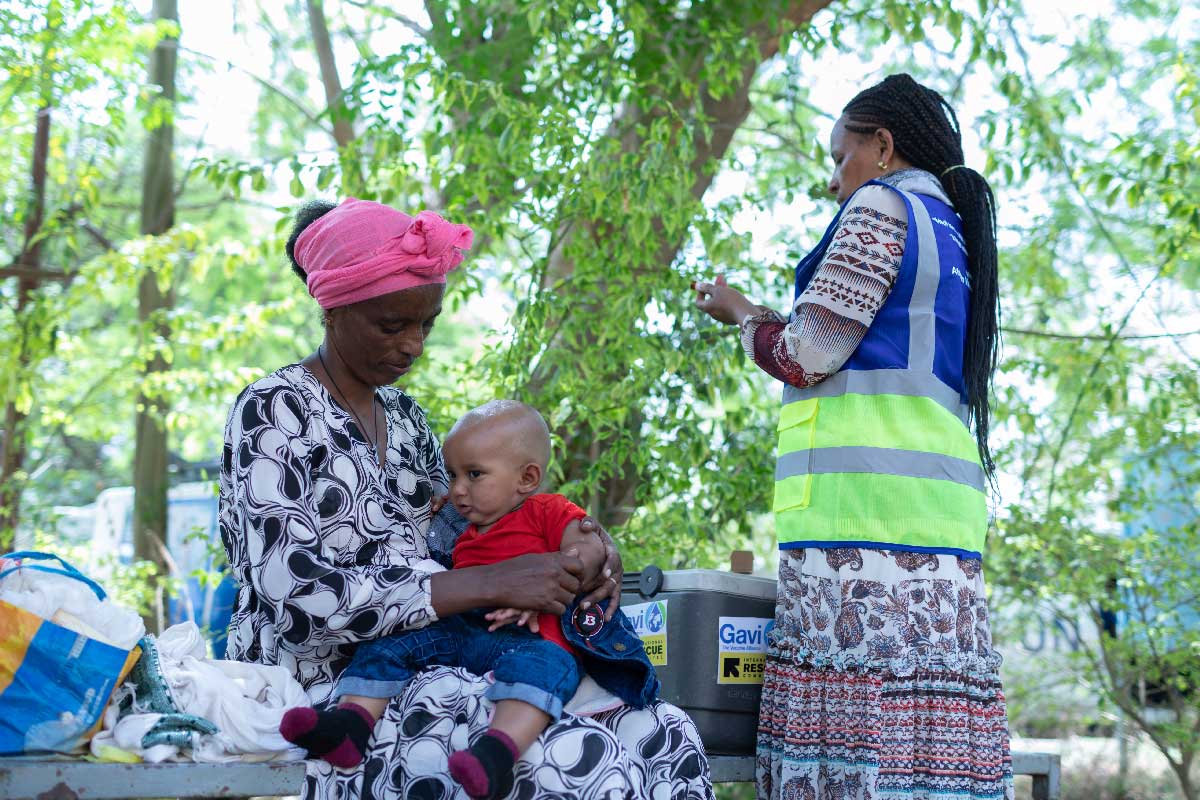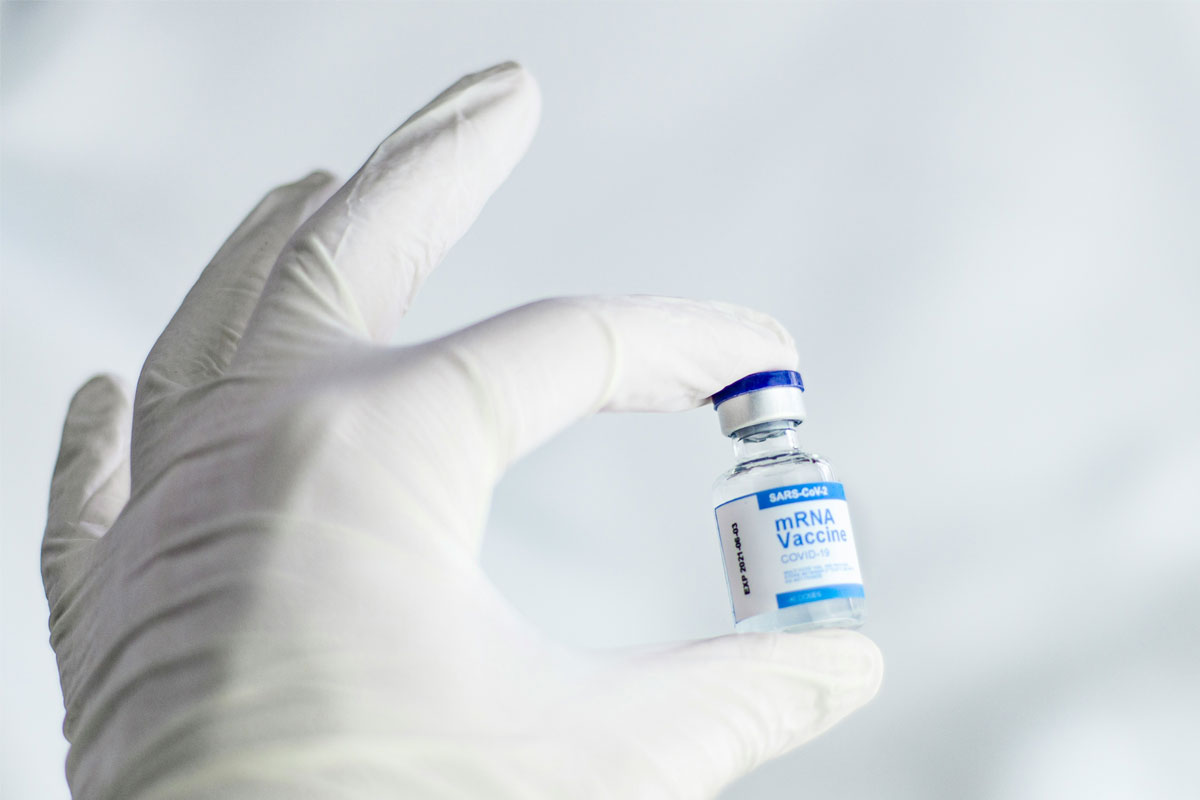In rural Malawi, malaria might have wings but the malaria vaccine rides a bike
Distributing the four-dose malaria vaccine is a challenge for any public health system. In Malawi, vaccinators on bicycles are proving vital to the task.
- 4 November 2025
- 5 min read
- by Deogracious Kalima

Rebecca Kapulula, a vaccinator, spends hours riding her bicycle through low-income settlements and into the fringe villages of Lilongwe district, carrying doses of the malaria vaccine in an insulated cooler box.
Parents here call Kapulula and her dozen-or-so pedalling colleagues the “vaccine bikers”. She does the deliveries no one else does, reaching low-resource locations that would otherwise be left behind.
The mission she’s on enthuses her. “We never dreamt of a malaria vaccine in Malawi,” Kapulula says. She’s a government-employed community health advocate, whose gear, including the all-important bike, is supplied by UNICEF. “It’s so fantastic,” she says proudly.
Weekly cycles
The vaccine bikers make it a weekly errand to set their spokes spinning, and make sure children under age two have a shot at malaria immunity.
The bicycles are an unexpectedly vital piece of public health equipment, says Umad Salima, a vaccine cyclist plying another part of Lilongwe, because vaccine-defaulting is high in hard-to-reach locations.

It’s a physically demanding task, involving muddy paths, potholed streets, and stray dogs. However, for the likes of Kapulula and Salima, what motivates them is that they have seen too much devastation from malaria growing up – cases of severe illness and mortality among family, friends, and neighbours.
“The most painful cases were kids who got severely ill [with malaria], and some wouldn’t make it. But since this vaccine came – we have good stories now,” says Kapulula.
At each house, she enters the lounge, explains the clinical importance of vaccination to parents, inoculates the eligible child, and waits for a few minutes to monitor for any reactions. Then she updates the data in her logbook and mounts her bike again.
“The parents flutter with emotions, some ask to pray with me – or offer me tea and scones,” she says, smiling.
Joyous reaction
Sandra Phiri, a mother of three in Kauma, one of the poorest slums in Lilongwe, and one reached by the vaccine cyclists, says she has gone for two years without any of her children contracting malaria. In the past, she recalls dreading the rainy seasons, when her children sweated and shivered with the mosquito-borne disease.
Have you read?
Phiri says she has personally made sure that some 15 mums in her church group are at home with their babies to meet the vaccine cyclists on their rounds. “I have become a vaccine preacher sort of after seeing the benefits brought by the bicycles,” she says.
Obstacles
Kapulula has pedalled cholera, rotavirus and other vaccines in past campaigns, but she and her colleagues have been particularly valuable since the introduction of the malaria vaccine.
The malaria vaccine is administered in four doses, requiring, four moments of encounter between the health system and the family. That can be a tall order for a stretched family or a stretched public health system. It turns out that a set of wheels can provide a needed boost.
Still, ideally all children in Malawi would come to the clinic to get their vaccines, says public health expert Dr Stanley Samusodza. Or else, the Ministry of Health would drive around in cars mounted with mobile vaccine containers, which he says he has seen done in low-income villages of wealthier neighbouring countries, like South Africa or Botswana.
But extreme poverty and health inequities are systemic in Malawi. “We can’t wait for mobile vaccine cars that we don’t have – hence the crucial role of vaccine cyclists,” says Amos Njirenji, a manager at the capital’s Kamuzu Hospital, where some of the community cyclists pick up their stock of vaccines.
‘Good going’
Noah Chimpeni, the deputy health minister, says the impact of the malaria vaccine, which began to be administered in parts of Malawi in 2019 and has expanded across the country in recent years, is becoming visible. He tells VaccinesWork that stand-out reductions in under-five mortality rates have been seen in Nsanje, Balaka, Chikwawa, Mangochi, and Ntchisi.
The extra layer of protection it affords has come not a moment too soon. As new studies show that resistance to malaria therapies is rising, the climate emergency is propelling the faster spread of the causative parasite.
Across southern Africa, “extreme humidity, failing cities’ sanitation, unpredictable floods and drought seasons are making mosquitoes survive longer, find ‘better’ habitat, or breed even in winter,” says environment rehabilitation specialist, Shamiso Mupara.
That means, Mupara adds, that legacy evidence-based interventions such as indoor residual spraying, mosquito net distribution, and seasonal chemoprevention need a ‘booster’: in this case, the new vaccine.
Wheeled advantage
Sandra Phiri says the vaccine brought by cyclists is a reassuring ‘shield’. In the past, she says her children would get sick with malaria regularly. She would stay in the hospital for up to two weeks, miss earnings from roadside business – she sells potatoes and chickens – and come out “more impoverished by time off”.
That has evidently changed for the better. But Kapulula, the vaccine cyclist, is quick to warn that the malaria vaccine shouldn’t lead to “complacency” across Malawi.
She and her fellow cyclists not only jab babies and toddlers, but they also hold what they call ‘pep talks’ with parents at each household, explaining that other anti-malaria mechanisms like nets, insect repellent oils, coils and clearing of waterlogged pools and bushes in townships are still ‘critically important’.
Umad Salima, the cyclist, agrees. “It is quite important for us to warn patients that the vaccine is no miracle – if parents don’t drain pools of stagnant water, cut grass, or cover babies with nets.”





